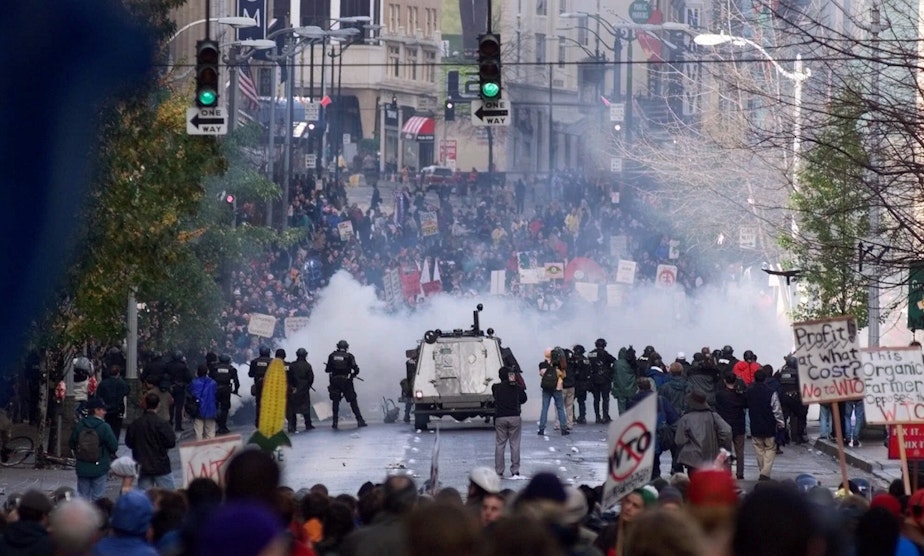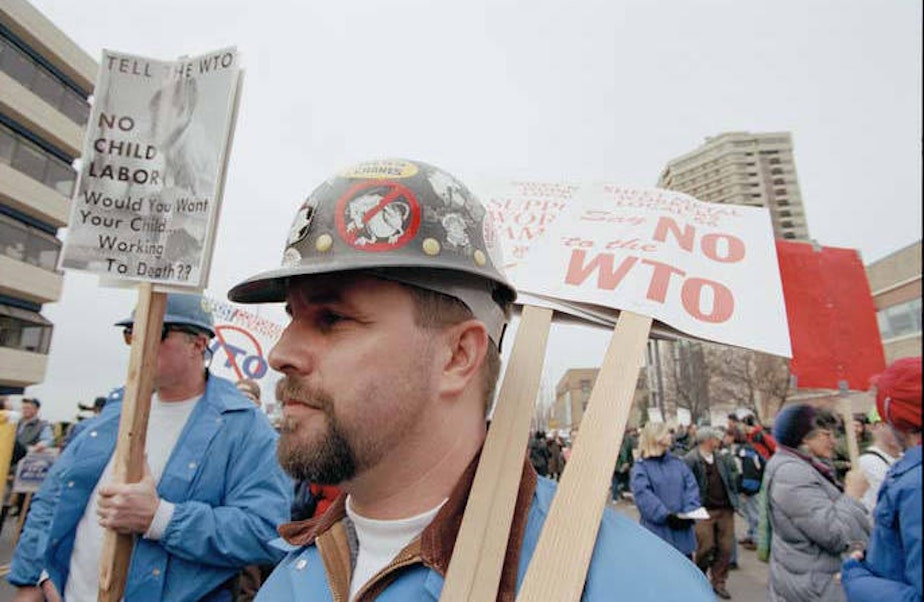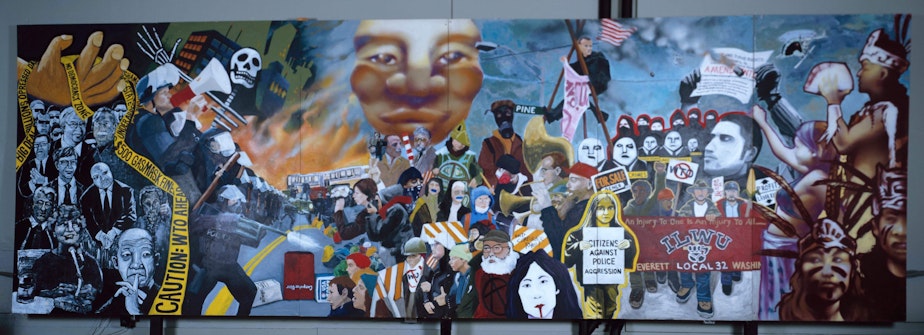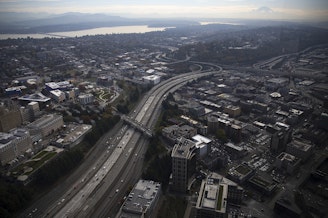'Smoke in the street.' Unions grapple with the complicated legacy of the WTO protests

Twenty years ago, demonstrators converged on downtown Seattle to protest the World Trade Organization.
It was supposed to be non-violent. But in a single day, the city was thrown into chaos.
The "Battle in Seattle" was the final major protest of the 20th Century. And the problems it exposed have become part of the world we live in today.
On November 30, 1999, delegates from around the world were heading toward Seattle’s Convention Center for the start of the WTO’s ministerial meeting.
On the agenda: liberalizing trade in forest products, food, and services.
But protesters had other plans.
That morning, they formed a human chain, blocking delegates from leaving their hotel and going to the meeting.
Different groups had united to protest the WTO’s agenda. Unions thought the trade agreement would mean American manufacturing jobs would be shipped overseas. Environmentalists accused the WTO of prioritizing trade over environmental protections. And labor activists believed the agreement protected the interests of corporations over the rights of workers.
Sponsored
Jon Holden, president of the Boeing Machinists, was at the protests. He said people were concerned that “these trade deals were really encouraging work to move out of the United States and to other countries.”
The North American Free Trade agreement, signed by President Bill Clinton six years earlier, was driving a lot of the concern.
Clinton had promised NAFTA would add jobs, not take them away. But American companies were using NAFTA to transfer jobs to Mexican factories.
Worried that the WTO agreement would lead to more outsourced jobs, the unions joined with others to plan a protest.

‘Whose Streets? Our Streets’
Sponsored
Labor unions had a plan to gather, then march.
Holden, who was a shop steward in Boeing's Everett plant at the time, said he didn’t realize how big the protest was going to get.
Holden was supposed to be a marshal. But when he arrived, they started training the marshals in non-violent resistance tactics and how to avoid reacting to police. He remembers wondering, “What kind of marshaling are we going to be doing?”
KUOW's Sam Eaton reported on the protestors forming a human chain to block the delegates from leaving their hotel.
“Several of the delegates have actually been circled by protesters," he said. "The atmosphere, though, is still one of festival.”
Sponsored
But as the morning went on, the mood darkened.
“I just heard the sound of some windows smashing and people seem very angry,” KUOW’s Orlando de Guzman reported. “This situation looks a lot more uncontrolled and a lot more tense.”
The unions were continuing with their permitted march.
Suddenly, Holden said, there were "a bunch of Seattle Police officers behind us in riot gear. That’s when I realized: how am I going to marshal anything?”
And then the march itself swept into the chaos.
Sponsored
The union march split into two factions. The official protest headed towards Seattle Center for a sit in, KUOW’s Peter Aronson reported. "But many others have headed toward downtown Seattle, regardless of what their marshals were telling them to do.”
It wasn’t just the unions' march. Protesters dressed as sea turtles merged with union protestors and a group of anarchists wearing masks.
Police had orders to clear them all.
“They’ve released tear gas," reported KUOW's Orlando de Guzman. "Smoke in the street. A lot of confusion."
"There is a thick cloud starting to move in front of me," he said.
Sponsored

The Protest’s Legacy
“Probably the biggest disappointment was that so much of the media focused on the anarchists and the violence that took place,” said Larry Brown.
Brown was also a marshal on that day. He’s now president of the Washington State Labor Council.
He said their message was buried by the focus on property destruction and the police reaction.
So, what happened to the concerns workers raised on November 30, 1999?
Jacob Vigdor, professor of public policy at the University of Washington, noted that manufacturing jobs continued to shift abroad — not only to Mexico, but to China.
In the 20 years since WTO, China’s imports to Washington ports have tripled. China sends Washington state goods worth ten times what we send to China.
Labor’s fears about family-wage middle class jobs disappearing became an enduring reality.
Only five percent of new households formed in King Country since 1999 have been middle class, according to the county demographer.
It means fewer people can afford to own homes. And more people are struggling to make rent.
The warnings the union protesters were trying to send are now our reality.
Brown said they wanted people to embrace "the idea that we have to level the playing field," so that all workers are paid a living wage, wherever they are.
He said the failure to address the needs of working people has had political and social consequences.
He sees “discontent, which was part of the results we saw in 2016. Where people were so dissatisfied with the idea that our government was not standing up for them.”
You don’t have to look back to see the impact of the WTO protests.
It’s all around us.



